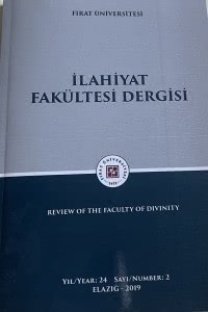SOCIO-CUL TURAL DYNAMICS OF MURIDIZM MOVEMENT IN CAUCASIA
Although much has been written on Sufısm, . there are only some
sources or writings evaluating the dynarnics of Muridizm mavement in
Circassia in relation with Naqshbandi Sufism. Therefore, the aim of this
study is to compensate such a shortage through analyzing the dynamics of
Muridizm movement. Such an aim requires elucidating, on the one hand, the
geopolitical, socio-cultural structure of Circassia, on the other hand, the
religious and more particularly, the Sufi grounds of Muridizm movement.
Although the acceptance of Islam by all the Circassian tribes was very Iate,
all native tribes except Georgians and Armenians had become Muslim
during the eighteenth century. From the early leader of the movement,
namely Imam Mansur, to Sheik Shamil, Naqshbandism was very successful
and effective in that region in terms of organizing as well as uniting all
Circassian tribes under the banner of Islam and Muridizın against the
Russian troops and their invasions. In this study, my principal thesis is as
follows: there were at least two main factors behind the success of the
Muridizm movement; they were Naqshbandi Sufism and tribal "asabiyya".
Both amalgamated and brought unity for all Circassian tribes to struggie
against Russian Empire. Consequently, this study aims to evaluate these two
dimensions in co Ilaboration with each oth-er.
Anahtar Kelimeler:
Caucasia, Muridizm, Naqshbandiyya, Tribalism, Shamil
SOCIO-CUL TURAL DYNAMICS OF MURIDIZM MOVEMENT IN CAUCASIA
Although much has been written on Sufısm, . there are only some
sources or writings evaluating the dynarnics of Muridizm mavement in
Circassia in relation with Naqshbandi Sufism. Therefore, the aim of this study is to compensate such a shortage through analyzing the dynamics of
Muridizm movement. Such an aim requires elucidating, on the one hand, the
geopolitical, socio-cultural structure of Circassia, on the other hand, the
religious and more particularly, the Sufi grounds of Muridizm movement.
Although the acceptance of Islam by all the Circassian tribes was very Iate,
all native tribes except Georgians and Armenians had become Muslim
during the eighteenth century. From the early leader of the movement,
namely Imam Mansur, to Sheik Shamil, Naqshbandism was very successful
and effective in that region in terms of organizing as well as uniting all
Circassian tribes under the banner of Islam and Muridizın against the
Russian troops and their invasions. In this study, my principal thesis is as
follows: there were at least two main factors behind the success of the
Muridizm movement; they were Naqshbandi Sufism and tribal "asabiyya".
Both amalgamated and brought unity for all Circassian tribes to struggie
against Russian Empire. Consequently, this study
Keywords:
Caucasia, Muridizm, Naqshbandiyya, Tribalism, Shamil,
___
- BENNIGSEN, A. 1988. Sufi ve Komiser: Rusya'da İslam Tarikatleri,trans!. Osman Türer, Ankara: Akçağ Yayınları.
- BİCE, H. 1990. Kafkasyadan Anadoluya Göçler, Ankara: TürkiyeDiyanet Vakfı Yayınları.
- ERA YDIN, S. 1994. Tasavvuf ve Tarikatler Tarihi, Istanbul: MarmaraU niversitesi. Yayınları.
- GAMMER, M. 1991. "Imam Shamil and Shah Mohammed: TwoUnpublished Letters, Central Asian Survey, Vol. 1 O, No. 112:171-179.
- GREEN, A. H. 1976. "Political Attitudes and Activities ofthe Ulema inthe Liberal Age," International Jourr.s.l ofMiddle East Studies, Vol. 7, No. 2:209-241.
- GABORIEAU, M., POPOVIC, A. and ZARCONE, T., at al. eds. 1990.Naqshbandi, Paris: Varia Turcica XVII
- GÖKÇE, C. 1979. Kafkasya ve Osmanlı İmparatorluğu'nun KaflcisyaSiyaseti, İstanbul: Şamil Şğitim ve KültürVakfı Yayını.
- HAAR, T. J. 1990. "The Naqshbandi Tradition in the Eyes of AhmadSirhindi" in Naqshbandis, eds. M. Gaboriean and A. Popovic, Paris: VariaTurcica XVII: 83-94.
- HENZE, M. L. I 983. "The Religion of the Central Caucasia," CentralAsian Suryey, Volume 1 No.A: 45-58.
- HOURANI, A. 1994. The Emergence of the Modern Middle East,Chippenham: Antony Rowe Ltd.
- JERSILD, L. A: 1995. Who wa-s Shamil," Central Asian Survey, Vol.14, No. 2: 205-223.
- KADRI,,A.1994. Tarikat-I Nakşibendiyye Prensipleri, İstanbul: PamukYayınları. -
- LONGWÖRTH, J. 1996,Katkas Halklarının Özgürlük Savaşı: 1837-1838, translated by S edat Özden, Kayseri: Rey Yayıncılık.
- MEMIŞ, A. 2000. Halidi Bağdadi ve Anadoluda Halidilik, İstanbul:Kitabevi.
- MORISON, D. 1985. "III. From Soviet Achieves," Central AsianSurvey, Vol. 4, No.4: 35-38.
- NART,? 1991. "The Life of Mansur," Central Asian Survey, Vol. 10,No. 1/2: 81-92.
- SCHIMMEL, A. 1975. Mystical Dimensions oflslam, Chape Hill: TheUniversity ofNorth Caroline Press.
- ARRAN, M.l 1991. "The Orthodox Mission in the North Caucasus,"Central Aı>ian Survey, Vol. 10, No. 1/2: 103-18.
- TAVKUL, U. 1993. Kafkasya Dağlılarında Hayat ve Kültür, İstanbul:Ötüken Yayınları.
- ISSN: 1304-639X
- Yayın Aralığı: Yılda 2 Sayı
- Başlangıç: 1996
- Yayıncı: FIRAT ÜNİVERSİTESİ İLAHİYAT FAKÜLTESİ
Sayıdaki Diğer Makaleler
HAKiKAT VE MECAZ BAGLAMINDA KUR'AN'DA "ENGELLiLiK" iFADE EDEN SÖZCÜKLERiN LiNGUiSTiK ANALiZi
İBRAHiM SURESi'NİN İLK VE SON AYETİ ARASINDAKİ BELAGİ UYUM
TÜRKÇEDE FiiL ÇEKJ.MLERi.V~ ARAP ÖGRENCiLERE OGRETIMI (Kahire Türkçe Öğretim Merkezi Uygulaması)
M. iKBAL'iN TEVHiD YORUMU: TEVHiD iNANCININ DiNAMiK YAPISI
SOCIO-CUL TURAL DYNAMICS OF MURIDIZM MOVEMENT IN CAUCASIA
